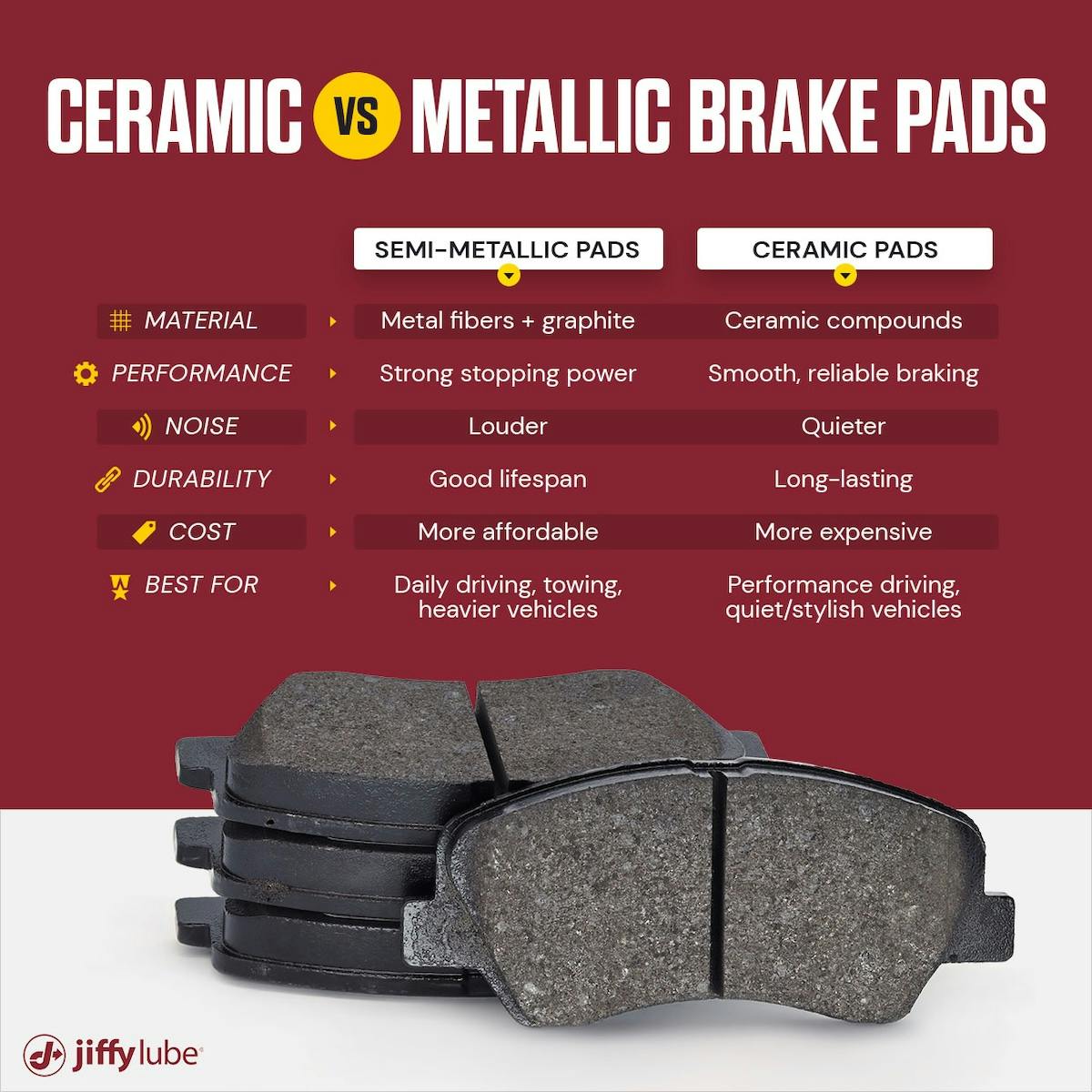Your vehicle’s braking system is its most important safety feature. A properly working brake system provides safe vehicle control under a variety of conditions.
When you press the brake pedal, the vehicle should slow down and stop. But it’s a little more complex than that (we promise not to make it too complicated). Vehicle manufacturers take all driving conditions into account when designing a braking system. When the driver presses the brake pedal, the hydraulic fluid, generally referred to as brake fluid, is pressurized via a device known as the master cylinder. This pressurized fluid passes through the brake lines and hoses to the cylinders next to the brake assemblies at each wheel.
Generally speaking, there are two types of braking systems — disc brakes and drum brakes. That doesn’t seem too daunting, so let’s take a closer look.
- Disc brakes, the most common type of braking system, consist of a metallic disc or rotor, a caliper, and a set of pads. When you press the brake pedal, hydraulic fluid passes through the lines causing the caliper piston(s) to press the pads against the disc/rotor. The application of the pads against the disc/rotor generates friction, causing the vehicle to slow.
- Drum brakes use a similar but unique system. Drum brakes consist of a brake drum and brake shoes. As with the disc brake operation, when you press the brake pedal, hydraulic fluid passes through the lines causing — and here is where drum differs from disc operation — a wheel cylinder to push the brake shoes against the inner surface of the brake drum, generating friction, causing the vehicle to slow.
Modern vehicles typically use two different types of brake pad materials — either ceramic or semi-metallic. So, whether you have semi-metallic or ceramic brakes, we’ll explain the difference and what to look for to help maintain your brake system.

Semi-Metallic Brake Pads
Semi-metallic — often referred to as just “metallic” — brake pads are made of metal fibers, such as iron or steel wire, held together with a graphite bonding agent. These metallic components usually comprise about 30-65% of the brake pad wear material. Because metallic brake pads are relatively harder than organic brake pads, they provide greater stopping power — a nice benefit when talking about brakes. One drawback of this brake pad design is the increased wear it can cause on brake discs/rotors. Harder pads can also create more noise.
Ceramic Brake Pads
This pad design is made of ceramic materials that are better at dispersing heat generated by braking friction, which helps prevent them from wearing down. One drawback of this pad design is the heat created during brake operation. The excessive heat the disc/rotor is subjected to can lead to warping. While ceramic pads can be more expensive, they are typically also lighter, quieter, better suited for more aggressive driving (not that you would do that), and produce the least amount of brake dust of any brake pad.
Which Brakes Are Right for You?
Following your vehicle manufacturer’s brake material recommendations allows you to retain “as designed” braking performance. Consistent, timely brake inspections and service help ensure this goal. Brake systems are subjected to normal wear and tear just like every part of a vehicle, which means they may eventually require service. It’s important to avoid letting your brakes completely wear out, causing a metal-against-metal situation. In addition to reducing braking ability, this can lead to more expensive damage to discs/rotors or drums.
Brake Pad Considerations
Whenever you’re driving, it’s important to be aware of the warning signs of a failing braking system, which may include:
- Vehicle pulling to one side during braking
- Pulsating brake pedal or steering wheel shakes while braking
- The brake pedal feels weak or soft
- Any unusual noise when applying pressure to the brake pedal
- Repeated need for added brake fluid
- Brake fluid leaks
- Unusual odor or smoke caused by friction
Stop by Your Local Jiffy Lube for Brake Services
Never take a break from caring about your vehicle’s brake system since it’s one of the most important systems when it comes to safety. If you think your brakes need service, stop by your local Jiffy Lube®. Our trained technicians follow the manufacturer’s recommendations and use components that meet or exceed Original Equipment Manufacturer (OEM) specifications, helping ensure you stay on the road without missing a beat.
Jiffy Lube also offers brake fluid exchange, brake inspection, brake replacement, and brake rotor (or drum) machining services to help keep your vehicle’s stopping power responsive and reliable. When you visit Jiffy Lube, you can expect the following during your visit:
- Technicians will ask questions to determine your driving style and habits
- A complete visual inspection of your vehicle’s brakes will be performed (wheels on)
- A more thorough brake inspection is performed if a tire rotation is performed
- Brake service recommendations will be presented to you based on this visual inspection
- In some cases, a more comprehensive inspection may be recommended
- As needed, your brake system will be serviced by our trained technicians
- Your vehicle will be test driven before and after the brake service
NOTE: Not all services are offered at all Jiffy Lube service centers. Please call ahead or check jiffylube.com to ensure the service is available at the Jiffy Lube location near you


